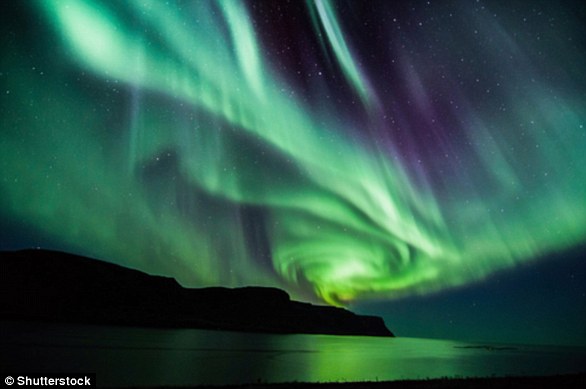Northern Lights are lighting up Britain’s skies for the second night in a row – and the Met Office says they could be visible again tonight
Skygazers had another chance last night to check off one of the biggest natural sights on their bucket list: the Northern Lights.
For the second evening in a row, the spectacular light show was visible after sunset in Britain.
Viewers posted their photos on X (formerly Twitter), including one in Moffat in Dumfriesshire, Scotland, who called the display ‘stunning’.
Another viewer on the west coast of Lewis in the Scottish Highlands posted: ‘It’s happened again!’ with the aurora shining purple and green.
If you missed the stunning display, there’s good news as the Met Office says there’s a chance the Northern Lights will be visible again tonight.
This photo was posted to X by user @moffat_wigwams and shows the aurora as seen from Moffat in Dumfriesshire, Scotland
An aurora is caused by disturbances in the Earth’s magnetosphere due to a stream of particles from the Sun and is usually located around the Earth’s magnetic poles.
The charged particles are expelled from the sun at high speed before interacting with Earth’s magnetic field.
The color appearance depends in part on the molecules with which the charged particles interact.
Red and green colors are usually signs of oxygen, pink and red the signs of nitrogen, while blue and purple are the result of hydrogen and helium.
According to the Met Office, this week’s aurora is the result of a coronal mass ejection (CME) – a massive ejection of plasma from the sun’s corona, its outermost layer.
It’s possible the display will be visible again tonight due to the violent eviction, although the further north you are the better.
An animation from the Met Office shows the aurora oval around the Northern Hemisphere, showing where exactly the best chance of seeing the light is until Friday.
“A coronal mass ejection (CME) has a chance of impacting Earth on Thursday, March 7,” the Met Office said in a new statement.
‘There is a chance that aurora will become visible from Scotland and similar geomagnetic latitudes.
“Similar enhancements to the auroral oval are slightly more likely to occur on Friday evening.”
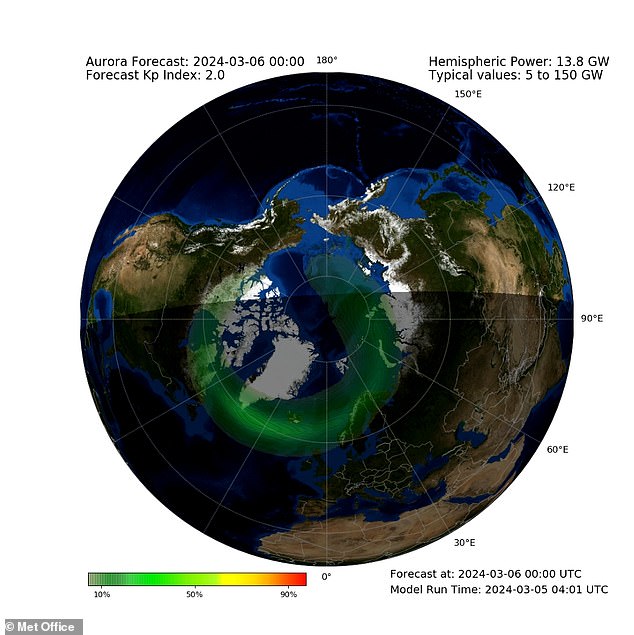
In the photo the aurora oval around the Northern Hemisphere, showing where exactly the best chance of seeing the light is
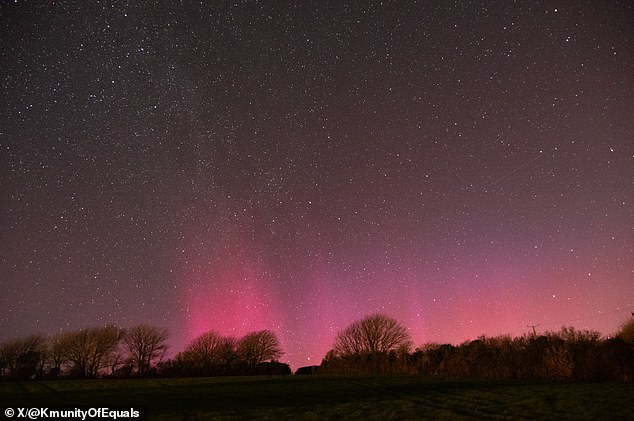
Twitter user @KmunityOfEquals shared this photo of the aurora from Cornwall on Sunday evening
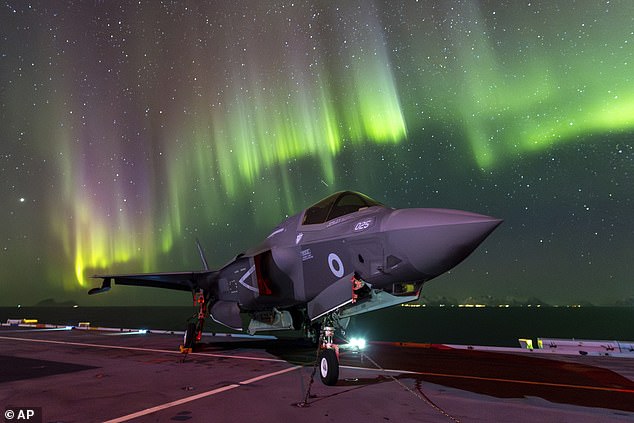
An F-35B Lightning jet is parked in a cockpit of the Royal Navy aircraft carrier HMS Prince of Wales, under the Northern Lights near the coast of Norway, Sunday, March 3, 2024
The public has already shared photos from Sunday evening when the Northern Lights were visible in Wiltshire, Merseyside, Lancashire and even Cornwall.
According to the Met Office, people with a decent camera should be able to take decent pictures of the aurora further south, even if it isn’t visible to the naked eye.
“Cameras help because the long exposure lets in a lot of light and enhances the colors more than the human eye can see,” a spokesperson said.
‘That’s why you sometimes see pictures as far south as Cornwall, even though it’s unlikely you’ll ever be able to see it that far south with the naked eye.’
The Northern Lights have fascinated scientists and skygazers for centuries, but the science behind them is not always well understood.
The Earth has an invisible force field, the magnetosphere, that protects us from dangerously charged particles from the sun, controlled by the magnetic field.
Expert Marty Jopson explains: ‘While it protects us, it also creates one of the most impressive phenomena on Earth: the Northern Lights.’
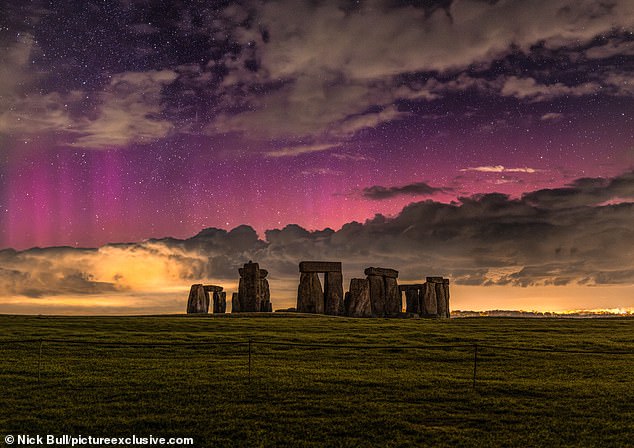
Stonehenge in Wiltshire with the Northern Lights on Sunday March 3, Britain’s first major aurora show of 2024
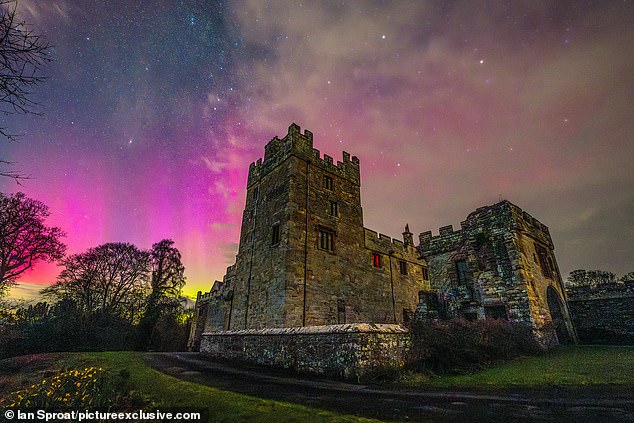
The Northern Lights are most commonly seen over places closer to the Arctic Circle, such as Scandinavia and Alaska, so any sighting over Britain is a treat for skygazers. Pictured: Naworth Castle in Cumbria, March 3, 2024
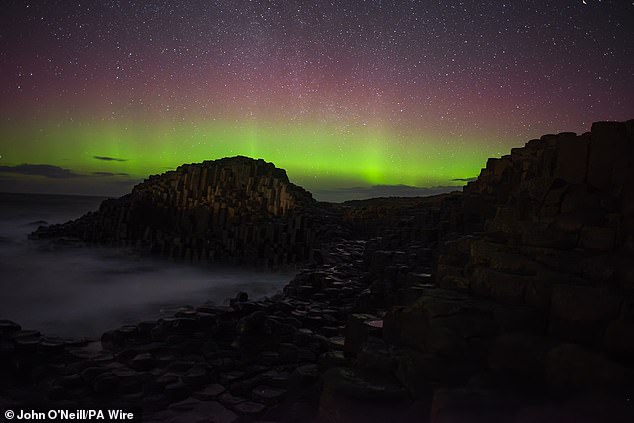
This Sunday evening aurora over the Giant’s Causeway in Northern Ireland was posted on Twitter by John O’Neill
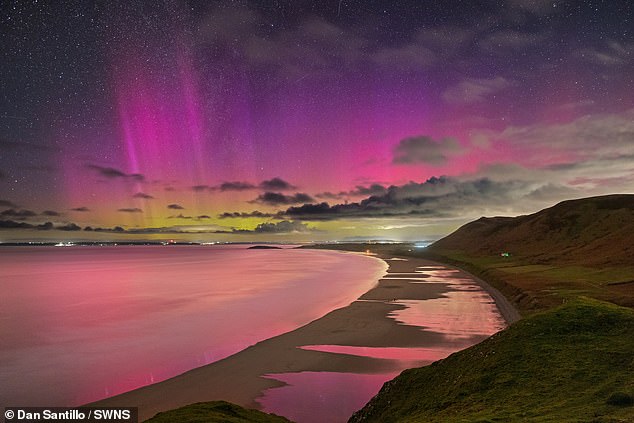
Stunning: the aurora borealis in Rhossili Bay, Gower, Wales, taken on Sunday, March 3, 2024
‘When the deadly solar winds encounter Earth’s magnetosphere, some charged particles become trapped and propelled along Earth’s magnetic field lines straight toward the poles.
‘And when they reach Earth, they strike atoms and molecules in our atmosphere, releasing energy in the form of light.’
The problem is that disruption of our magnetic field causes solar storms that can affect orbiting satellites, navigation systems, Earth’s power grids, and data and communications networks.
“Damaging space weather has hit Earth before, but as we become increasingly dependent on systems and technologies vulnerable to solar outbursts, future solar impacts could be even more disruptive,” the European Space Agency (ESA) said.

